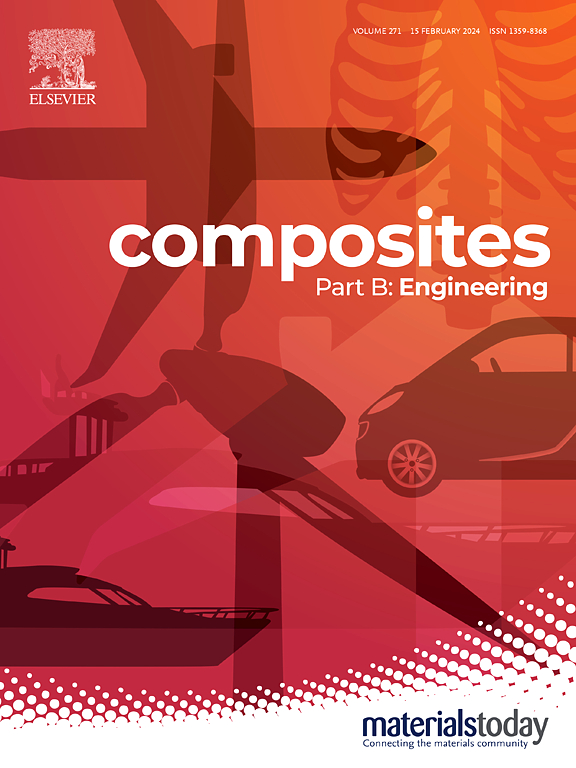单向碳纤维增强聚合物复合材料的冲击响应:纤维取向和体积分数的影响
IF 12.7
1区 材料科学
Q1 ENGINEERING, MULTIDISCIPLINARY
引用次数: 0
摘要
本研究研究了单向碳纤维增强聚合物(UD-CFRP)复合材料中的冲击波传播,重点研究了不同纤维取向(0°、30°、45°、60°和90°)和纤维体积分数(64%和51%)的影响。通过一系列以400 m/s左右速度进行的板冲击实验,结果表明,纵向应力在0°取向时最高(约3 GPa),在90°取向时下降近50%,其体响应与纯环氧树脂相似。在0°取向和更高的冲击速度下,观察到一种明显的双波结构,由弹性前驱体和塑性冲击波组成,所需的最小应力为3gpa。纤维含量对冲击性能的影响很小,而环氧基在高取向下起主导作用。这些发现强调了纤维取向和基体性能在控制复合材料抗震性方面的关键作用,表明需要进一步探索基体材料和复合材料设计优化。本文章由计算机程序翻译,如有差异,请以英文原文为准。
Shock response of unidirectional carbon fibre-reinforced polymer composites: Influence of fibre orientation and volume fraction
This study investigates the shock wave propagation in unidirectional carbon fibre-reinforced polymer (UD-CFRP) composites, focusing on the effects of varying fibre orientations (0°, 30°, 45°, 60°, and 90°) and fibre volume fractions (64 % and 51 %). Through a series of plate impact experiments at approximately 400 m/s, the results revealed that longitudinal stress was highest at 0° orientation (around 3 GPa) and decreased by nearly 50 % at 90°, where the bulk response mirrored that of pure epoxy. A distinct two-wave structure, consisting of an elastic precursor and a plastic shock wave, was observed at 0° orientation and higher impact velocities, requiring a minimum stress of 3 GPa. Fibre content showed only a marginal influence on shock behaviour, with the epoxy matrix playing a dominant role at higher orientations. These findings highlight the critical role of fibre alignment and matrix properties in governing shock resistance of the composite, suggesting the need for further exploration of matrix materials and composite design optimisation.
求助全文
通过发布文献求助,成功后即可免费获取论文全文。
去求助
来源期刊

Composites Part B: Engineering
工程技术-材料科学:复合
CiteScore
24.40
自引率
11.50%
发文量
784
审稿时长
21 days
期刊介绍:
Composites Part B: Engineering is a journal that publishes impactful research of high quality on composite materials. This research is supported by fundamental mechanics and materials science and engineering approaches. The targeted research can cover a wide range of length scales, ranging from nano to micro and meso, and even to the full product and structure level. The journal specifically focuses on engineering applications that involve high performance composites. These applications can range from low volume and high cost to high volume and low cost composite development.
The main goal of the journal is to provide a platform for the prompt publication of original and high quality research. The emphasis is on design, development, modeling, validation, and manufacturing of engineering details and concepts. The journal welcomes both basic research papers and proposals for review articles. Authors are encouraged to address challenges across various application areas. These areas include, but are not limited to, aerospace, automotive, and other surface transportation. The journal also covers energy-related applications, with a focus on renewable energy. Other application areas include infrastructure, off-shore and maritime projects, health care technology, and recreational products.
 求助内容:
求助内容: 应助结果提醒方式:
应助结果提醒方式:


